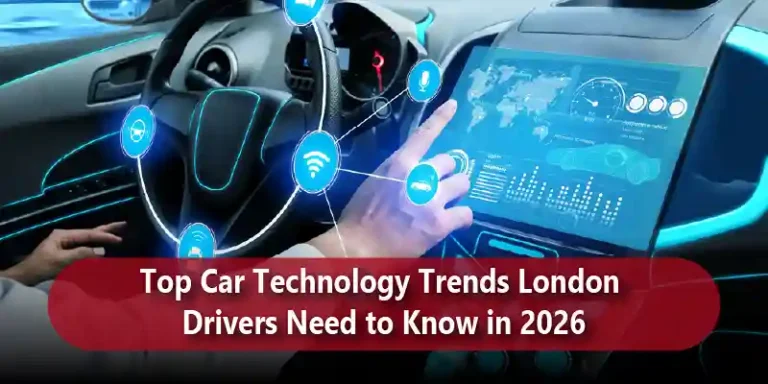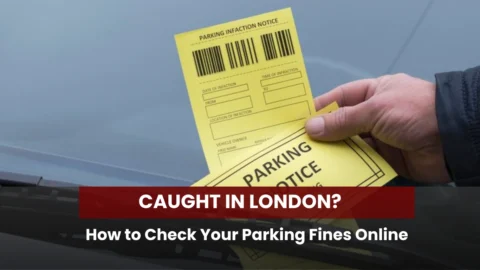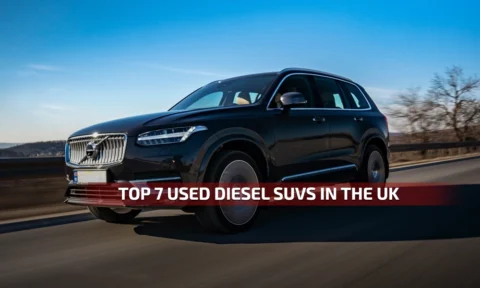The rumble of the combustion engine is slowly being replaced by the silent whir of electric motors, and the traditional driver’s seat is evolving into a command centre powered by Artificial Intelligence. For London drivers in 2026, the car is no longer just a mode of transport; it’s a hyper-connected, intelligent, and increasingly self-aware machine.
As one of the world’s most congested and technologically advanced cities, London is on the front lines of this automotive revolution. New UK legislation, major infrastructure projects, and a global push for sustainability mean that the way you drive, park, and own a car is about to change forever.
This in-depth guide is your essential roadmap to the five biggest car technology trends that will redefine your driving experience in the UK capital in 2026 and beyond. Get ready to understand the tech that will make your journeys safer, cleaner, and ultimately, hands-free.
1. The Dawn of the Autonomous Vehicle in London: Driverless Cars Arrive
The most significant shift comes with the commercial reality of autonomous vehicles. In a landmark move, new UK legislation is paving the way for the legal deployment of advanced self-driving technology on public roads as soon as 2026. This move fundamentally changes legal liability, shifting it from the “user-in-charge” to the manufacturer, software company, or insurer when the car is in self-driving mode.
The Rise of the Robotaxi in London
For Londoners, the first taste of true autonomy is likely to come through Mobility-as-a-Service rather than in personally owned cars. Pilot programs for self-driving taxi London services are being fast-tracked, with initial commercial deployments expected in spring 2026.
- Pioneering Fleets: Companies like Waymo and UK-based firms such as Wayve are actively involved in trials in and around the capital, with Waymo even hinting at expanded European operations. The vision of a Waymo London robotaxi might soon shift from a concept to a reality, starting in designated zones.
- The Level 4 Leap: These services will use Level 4 autonomy, meaning the vehicle can handle all driving tasks under specific conditions. This makes the robotaxi London 2026 a genuine possibility, offering an on-demand, driverless transport solution to navigate the city’s complex traffic.
- Public Perception and Safety: While a majority of UK drivers are currently apprehensive about driverless cars, the new legislation and rigorous testing mandate that these vehicles must achieve a level of safety at least as high as that of a careful and competent human driver. The technology’s faster reaction times and lack of distraction are positioned as key safety advantages over human error, which contributes to nearly 90% of all collisions.
2. Connected Cars and Urban Web: V2X Communication
London’s notorious traffic jams and dynamic road conditions provide the perfect testing ground for connected car trends in the UK. The key technology here is Vehicle-to-Everything (V2X) communication.
V2X communication in the UK enables your car to talk directly to other cars, traffic lights, road signs, pedestrians, and the cloud. This creates a real-time, shared awareness that goes far beyond what a human driver or even standard sensors can detect.
How V2X Will Transform Your London Drive
- Traffic Optimisation: Imagine your car communicating with a traffic light system to ensure you hit a sequence of greens, dramatically reducing stop-start traffic and emissions. This is Vehicle-to-everything London in action.
- Safety Net: V2X can warn you of a sudden emergency brake by a car two vehicles ahead, a hazard your eyes can’t see yet. It also alerts you to emergency vehicles approaching from around a corner or a pedestrian stepping into the road from behind a parked bus.
- Next-Gen Navigation: Your navigation system will use live, granular data from surrounding vehicles to offer not just the fastest route, but the safest and most energy-efficient one, guiding you away from localised congestion and dangerous conditions.
While V2X infrastructure deployment is still scaling up, the technology is considered a non-negotiable enabler for truly effective autonomous vehicles London 2026, ensuring they can see and react to the unpredictable human world.
3. The Reinforcement of Safety: Advanced Driver Assistance Systems
Before cars drive themselves, they are getting exponentially better at assisting the driver. ADAS technology UK 2026 is becoming far more sophisticated and will be standard and mandatory on most new vehicles.
Advanced driver assistance systems London are transitioning from mere warning tools to active, interventionist co-pilots.
- Advanced ADAS Features: Expect features like Highway Assist to become widespread hands-free, eyes-on driving under specific motorway conditions. Systems will incorporate not only cameras and radar but also high-definition for superior object detection in poor weather or at night.
- Driver Monitoring Systems: The next generation of safety is internal. AI-powered cameras inside the cabin will monitor the driver’s gaze, head position, and blinking to detect fatigue or distraction, intervening with stronger alerts or even slowing the vehicle down if the driver fails to take control when prompted.
- Cybersecurity: As cars become software-defined, the security of these systems is paramount. Next-gen car safety UK includes robust cybersecurity architectures to protect the vehicle’s critical systems from external threats and to ensure the reliability of over-the-air software updates.
4. Electric Mobility Revolution: EV Trends and Smart Charging
The move to electric is irreversible, and Electric vehicle technology UK is rapidly maturing. For a densely populated city like London, the focus shifts to infrastructure, energy integration, and efficiency.
EV Trends London 2026: Beyond the Battery
- Hyper-Charging Infrastructure: London’s charging network is expanding, with a focus on ultra-fast charging hubs and the smart deployment of on-street chargers integrated into existing lampposts and street furniture to serve drivers without driveways.
- Vehicle-to-Grid (V2G) Cars UK: This is a game-changer for the energy grid. V2G technology allows your EV to not only take power from the grid but also to send excess power back during peak demand times, turning your parked car into a mobile power bank. This could allow drivers to earn revenue by helping to balance the grid, especially relevant for London drivers facing high energy costs.
- The 800-Volt Architecture: New high-end EVs are adopting an 800-volt system, which drastically cuts charging times, enabling them to add significant range in under 15 minutes at powerful charging stations. This makes long-distance travel from London much more feasible.
5. The Intelligent Co-Pilot: In-Car AI and Sustainability
The final, unifying trend is the integration of Artificial Intelligence, making the cabin experience more seamless and the car itself more eco-friendly.
Your Personal AI Driving Co-pilot
In-car AI assistant UK: Systems are moving far beyond simple voice commands. Powered by large language models (LLMs) and advanced natural language processing, they will become genuinely conversational.
- AI Driving Co-pilot UK: This assistant will manage everything from optimising your charging schedule based on electricity tariffs to proactively recommending a bypass for unexpected road closures based on real-time V2X data. It will learn your habits, personalising climate control, seating position, and even entertainment automatically.
- Generative AI: Imagine asking your car, “Find me a sustainable, dog-friendly pub with available parking near the South Bank” and the AI assistant executing the search, checking for EV charging spots nearby, and setting the navigation—all through a natural conversation.
Things You Might Wonder
According to the UK government’s fast-tracked plans, commercial pilots for Level 4 self-driving taxi London services, potentially without a safety driver, are expected to begin in spring 2026. Widespread use in personal vehicles is already available in some models and will become much more common.
V2X creates a virtual network that allows your car to receive real-time data from traffic lights, roadworks, and other vehicles. This means earlier warnings about hazards, better-timed journeys to avoid red lights, and improved traffic flow, ultimately leading to a less stressful commute in London traffic.
Robotaxi is a commercially operated, self-driving vehicle you can summon via an app. It’s not intended to replace your private car, but rather to offer a new, highly convenient, and potentially safer alternative for urban journeys, reducing the need for parking and private vehicle ownership in the densest parts of the city.
No. Many Advanced driver assistance systems London are becoming standard features due to new regulations. While the most advanced AI driving co-pilot UK features might debut in luxury models, core safety systems are rapidly trickling down to all new vehicles.
Not necessarily. V2G requires a bi-directional charger in the car and a compatible charger installed at your home or workplace. While the capability is a major EV trends London 2026 focus for new models, older EVs may not be retrofittable. Check your vehicle’s specifications and local power provider options.
The future of driving in the capital is smart, electrified, and connected. London drivers are about to witness and participate in the most exciting chapter in automotive history.
For more hacks on optimising your EV range, the latest car tips, or to join the conversation at Ask about cars!
For more related topics on automotors based in the UK. Get into this:
- 5 Fuel-Efficient Driving Habits That Actually Work in Birmingham
- Is Your Car Winter Ready? 7 Checks Hampshire Drivers Often Overlook







